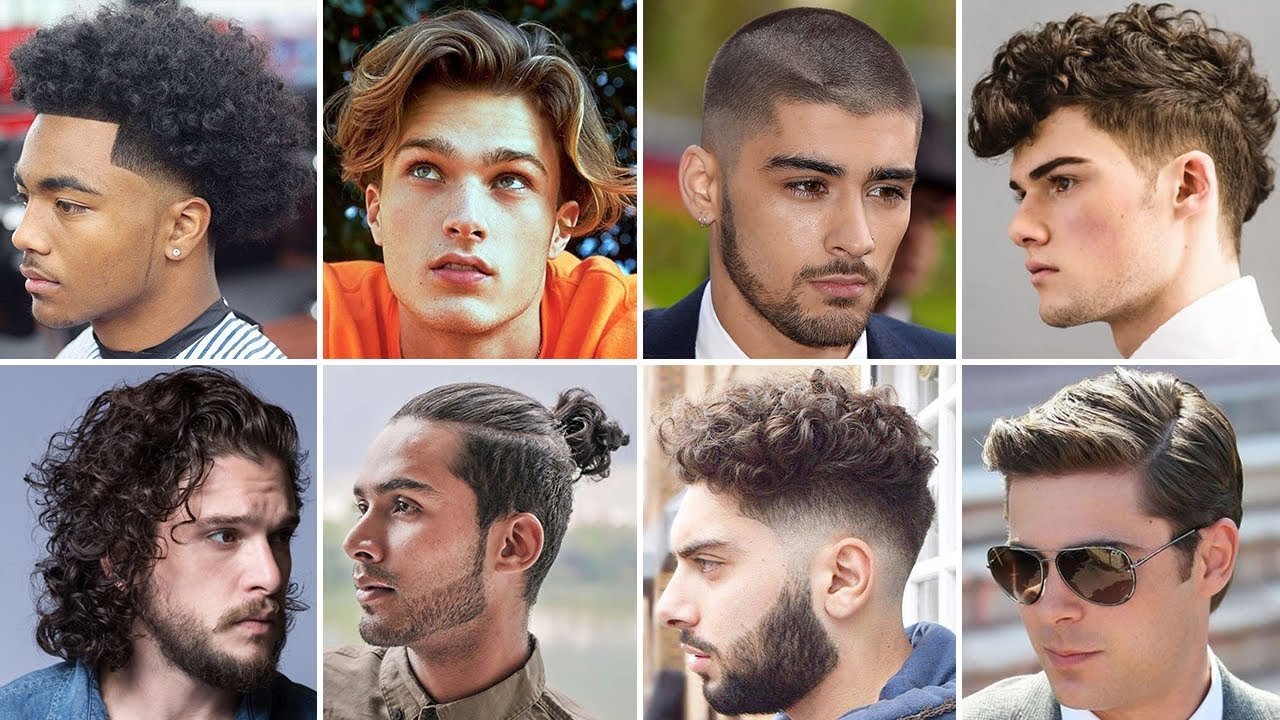Exploring the Evolution of Men’s Hairstyles in the USA
Men’s hairstyles in the USA have seen dramatic transformations over the decades, mirroring broader cultural shifts and influences. From the clean-cut looks of the early 20th century to the eclectic and experimental styles of today, American men’s hair trends offer a fascinating glimpse into societal changes and evolving ideals of masculinity.
Early 20th Century: The Classic Cuts
In the early 1900s, American men typically wore conservative, well-groomed hairstyles. The classic “slicked-back” look was popularized by the use of pomades and waxes, which gave hair a shiny, polished appearance. This style was emblematic of the professionalism and formality of the era. The side part was also a staple, reflecting a sense of order and propriety.
The 1920s and 1930s saw the rise of the “short back and sides” cut. Influenced by military precision and practicality, this style remained neat and tidy, requiring minimal upkeep. During this time, figures like President Franklin D. Roosevelt and celebrities such as Clark Gable helped popularize these clean, straightforward cuts.
Post-War Era: The Birth of New Trends
The 1950s marked a turning point with the emergence of more dynamic styles. The “pompadour” became a symbol of rebellious youth, popularized by Elvis Presley. This hairstyle involved sweeping the hair upwards and back, creating a voluminous and bold look. The pompadour was closely followed by the “ducktail” or “DA” style, where the hair was combed back and slightly tapered at the sides.
The 1960s and 1970s saw even greater experimentation. The “Beatlemania” effect brought longer hair into the mainstream. The iconic mop-top haircuts of The Beatles and other rock bands challenged conventional norms, paving the way for longer, more relaxed styles. This era also witnessed the rise of the “afro,” celebrating natural texture and becoming a powerful symbol of African-American pride and cultural identity during the Civil Rights Movement.
1980s and 1990s: The Age of Excess
The 1980s were characterized by flamboyance and excess, and this was reflected in men’s hairstyles. The “mullet,” with its short front and long back, became a notable trend. This style was often associated with rock stars and sports figures, reflecting an era of bold self-expression.
The 1990s saw the continuation of this trend towards individuality. The “grunge” movement, influenced by bands like Nirvana, popularized unkempt, natural looks with layered cuts and messy styles. Meanwhile, the “buzz cut” and “crew cut” provided a clean, easy-to-maintain alternative for those preferring a no-fuss approach.
2000s to Present: Diversity and Personal Expression
As the 21st century unfolded, men’s hairstyles became increasingly diverse, with greater emphasis on personal expression. The early 2000s saw the rise of “hair gel” and “spiked” hairstyles, popularized by celebrities and athletes. The “fade” haircut, which gradually shortens the length from top to sides, became a versatile and popular choice.
In recent years, there has been a noticeable shift towards embracing natural textures and individuality. The “quiff,” characterized by its voluminous and styled appearance, and the “undercut,” where the sides and back are shaved while the top is left longer, have both gained traction. Additionally, the resurgence of retro styles, such as the modern pompadour and slicked-back looks, reflects a blend of nostalgia and contemporary flair.
Influences and Trends
Today’s hairstyle trends are heavily influenced by pop culture, social media, and celebrity endorsements. Platforms like Instagram and TikTok have made it easier for men to explore and share new styles, leading to a more globalized and eclectic range of haircuts. Men’s grooming products have also evolved, offering a wider array of options for achieving various looks, from matte finishes to high-shine finishes.
Conclusion
The evolution of men’s hairstyles in the USA offers a window into broader social and cultural changes. From the conservative cuts of the early 20th century to the diverse and expressive styles of today, American men’s hair trends reflect shifting attitudes towards identity, fashion, and self-expression. As society continues to evolve, it will be fascinating to see how future trends in men’s hairstyles will develop, potentially merging historical influences with innovative new looks.
